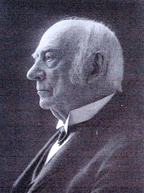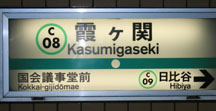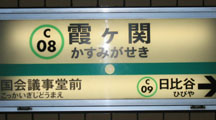|
Web Exclusives: PawPlus
James Hepburn 1832's influence lives on in Japan By Bruce G. Dunning ’62 Any one of his accomplishments would have earned James Curtis Hepburn, a member of the Class of 1832, a revered and important place in the history of 19th-century Japan. But taken together, his 33 years as a missionary there left an astounding legacy. His contributions include helping to introduce Western medicine, starting an English-language school that grew into a university, contributing to the first complete Japanese-language translation of the Bible, compiling the first Japanese-English dictionary, and popularizing the most-widely used system of writing Japanese in the Western alphabet – a system that still bears his name. The 20,000-word dictionary and the Romanization known as the Hepburn system" (or hebon" in Japanese) are his most influential accomplishments. At his word," wrote his biographer and fellow missionary, William Elliot Griffis, the two-leaved gates of the Japanese language and literature swung apart, to the delight of mankind." James Hepburn was born in March 1815 in Milton, Pa., the son of a College of New Jersey alumnus, Class of 1803. He entered the College at 16 and spent only two years as a student, graduating in 1832. But Princeton seems to have changed his direction in life. He discovered chemistry and this led him to medicine instead of the ministry, the goal his parents had set for him. He received his medical degree from the University of Pennsylvania in 1836. Two years later, he felt called to be a medical missionary; that year, too, he met a woman who shared his dream, his future wife, Clara. They married in 1840 and left within weeks for the Far East. Their mission brought them first to Batavia (now Jakarta), then Singapore and Macao. It took two years and the end of the First Opium War for missionaries to gain entry to China. In 1842, the Hepburns finally settled in Amoy, on China's south coast. Three years later they became so ill, probably with malaria, that they had to return home, their five years of mission work a great disappointment," Hepburn later said. Health was always precarious, especially for Clara Hepburn; the couple had five children, only one of whom survived infancy. For 14 years, Dr. Hepburn practiced medicine in New York City. Then, in 1858, the U.S. government succeeded in pressuring Japan to allow foreign residents. Japan insisted, in the words of one chronicler of the time, on terms to keep opium and Christianity out of the country." Hepburn immediately asked the Presbyterian foreign mission board to send him to Japan. In October 1859 the couple arrived in Japan. There were only 44 foreigners
in the Yokohama-Kanagawa settlement. The country witnessed frequent violencw
then, going through its last years of feudalism before the collapse of the two-century-old
Shogunate and the restoration" of the emperor. The country had been isolated
from the West, and the newly arrived foreigners were feared and hated. In 1861, the doctor was finally able to open his clinic. Thus began his introduction of Western medicine to Japan, offering both care for the sick and training for students of medicine. He amputated the gangrenous leg of a famous Kabuki actor and fitted the man with a U.S.-made prosthesis. The fact that the actor could resume his stage career boosted the reputation of Western medicine. A quarter-century later, Hepburn would attend a meeting of the recently-founded Tokyo Medical Society; some 70 doctors, most of them Japanese, would be present. In his home, Hepburn started a school teaching English to young Japanese.
His students became leaders in the explosion of industrial, financial, and cultural
modernization that transformed Japan in the last third of the 19th century. Merged
with several other missionary academies, his school evolved into Meiji Gakuin
University, even now a distinguished Christian institution. In 1889, Hepburn
became its first president. A major hurdle for the missionary-translators was devising a standardized system for writing Japanese in Roman letters. At first, for example, Japan's capital city was spelled Tokio," which would logically be pronounced toe-key-oh." But the correct pronunciation is toe-oh-kyoh-oh," hence Tokyo." One organization even urged a complete shift from the traditional writing system to nothing but the Roman alphabet. This group developed a standardized transliteration that Hepburn adopted for the third edition of his dictionary (1887). This became identified with his work that now bears his name. The Hepburn system allows an English speaker with little or no knowledge of the language to approximate the Japanese pronunciation. Other systems more accurately reproduce Japanese pronunciation, but Hepburn" with minor modifications remains the most widely used way to write Japanese words in the Western alphabet. Although there is a semi-official government system, Hepburn is still the standard used for Japanese passports, for signs at airports and railroad facilities, for road signs, and in publishing. But controversy over what system to use on the Internet is quietly raging in Japan. Neither Hepburn nor the government system has been adopted for cyber use; consequently confusing, non-standard usages constantly are appearing. So the old doctor still dominates the Romanization question, more than a
century after he left Japan. In 1892, Hepburn departed for the United States,
hailed as a samurai of Jesus." On his 90th birthday Japan's emperor awarded
him a decoration; three months later, at Commencement, Princeton University gave
him an honorary L.L.D., and one speaker noted that he was the University's oldest
living alumnus. His death six years later was headline news in Japan. Bruce Dunning '62 is a retired CBS News correspondent and bureau chief. He spent most of his 35 years with the network in Asia, and in the last 15 years, he was bureau chief for Asia, based in Tokyo. His first attempts at broadcasting news were at WPRB. Dunning now lives in New Jersey.
|
||



